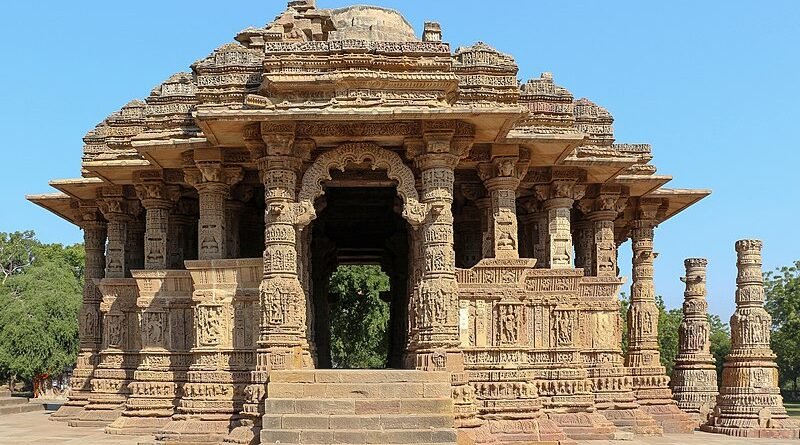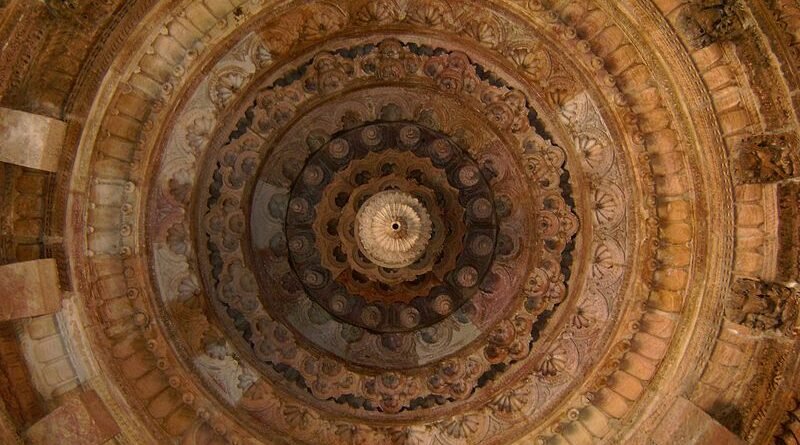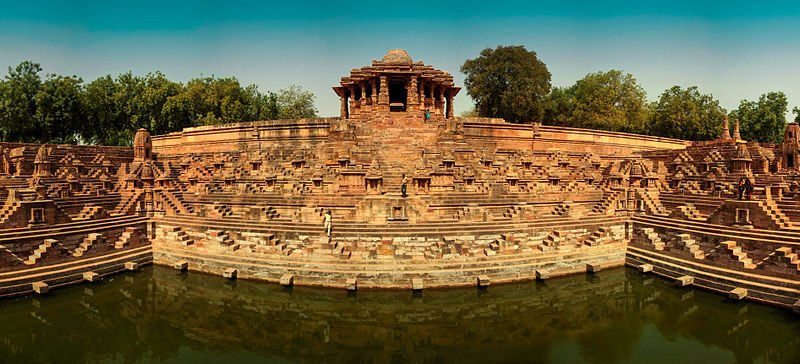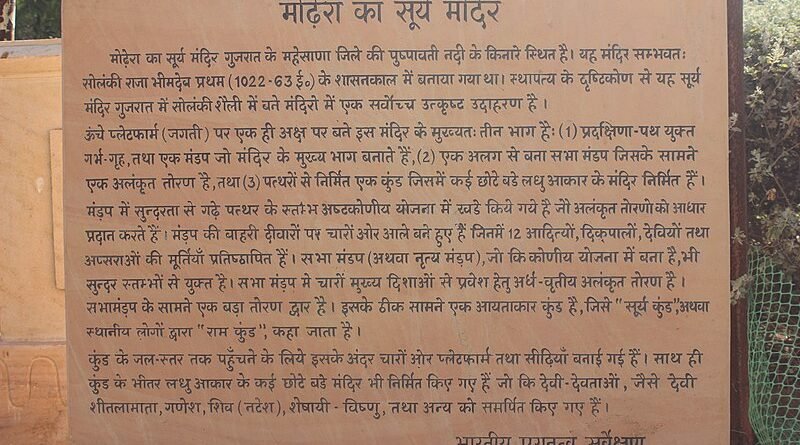Modehra Sun Temple Ahmedabad
The Sun Temple of Modhera is a Hindu temple dedicated to the solar deity Surya located at Modhera village of Mehsana district, Gujarat, India. It is situated on the bank of the river Pushpavati. It was built after 1026-27 CE during the reign of Bhima I of the Annhilwara Chalukya / SOLANKI dynasty. No worship is offered now and is protected monument maintained by Archaeological Survey of India. The temple complex has three components: Gūḍhamanḍapa, the shrine hall; Sabhamanḍapa, the assembly hall and Kunḍa, the reservoir. The halls have intricately carved exterior and pillars. The reservoir has steps to reach the bottom and numerous small shrines.
History
The shrine proper of the Sun Temple was built during the reign of Bhima I of Chaulukya dynasty. Earlier, during 1024–1025, Mahmud of Ghazni had invaded Bhima’s kingdom, and a force of around 20,000 soldiers had unsuccessfully tried to check his advance at Modhera. Historian A. K. Majumdar theorizes that the Sun Temple might have been built to commemorate this defense. On a block in western wall of cella, there is an inscription “Vikram Samvat 1083″ upside down carelessly incised in Devnagari script which correspond to 1026-1027 CE. No other date is found. As the inscription is upside down, it evidences the destruction and reconstruction of the cella. Due to the position of the inscription, it is not firmly considered as the date of construction. On the stylistic ground, it is known that the Kunda with its corner shrines was built earlier at the beginning of the 11th century. The inscription is rather considered as the date of destruction by Ghazni instead of the construction. Soon after Bhima had returned to the power. So the temple proper, the miniature and the niche shrines in the tank were built shortly after 1026 CE. The dancing hall was added much later in the third quarter of the 12th century along with the gateways, the porch of the temple proper and the doorframes of the temple and the cella during the reign of the Karna.
The temple is built on 23.6° latitude (approximately near Tropic of Cancer). The place was later known as Sita ni Chauri and Ramkund locally. No worship is offered here now. The temple is the Monument of National Importance and is maintained by the Archeological Survey of India.
It was added to the tentative list of the UNESCO World Heritage Site in December 2022.
Architecture
The temple complex is built in Māru-Gurjara style (Chaulukya style). The temple complex has three axially aligned components; the shrine proper (garbhagriha) in a hall (gudhamandapa), the outer or assembly hall (sabhamandapa or rangamandapa) and a sacred reservoir (kunda).
The Sabhamandapa is not in continuation with Gudhamandapa but is placed little away as a separate structure. Both are built on a paved platform. Their roofs have collapsed long ago leaving behind a few lower-most courses. Both roofs are 15′ 9” in diameter but are constructed differently. The platform or plinth is inverted lotus-shaped.
Gudhamandapa and Garbhagriha
Gudhamandapa
The Gudhamandapa measures 51 feet 9 inches by 25 feet 8 inches. It is almost equally divided into Gudhamandapa, the hall and Garbhgriha, the shrine proper. Both are rectangular in plan with one projection on each of the smaller sides and two projections on each of the longer sides. These projections on the smaller sides form the entrance and the back of the shrine. The three projections of the outer wall of Gudhamandapa had windows on each side and the east projection had the doorway. These windows had perforated stone screens; the northern is in ruins and the southern is missing. Pradakshinamarga is formed by the passage between the walls of Garbhgriha and the outer walls of Gudhamandapa. The roof of passage has stones slabs carved with rosettes. The Shikhara of it no longer exists

















